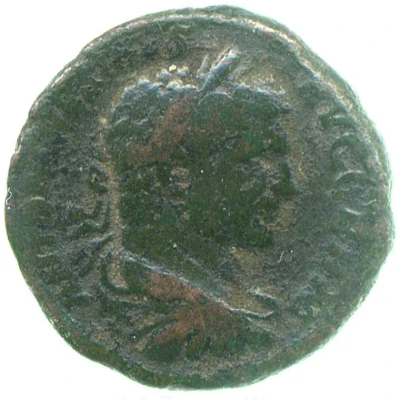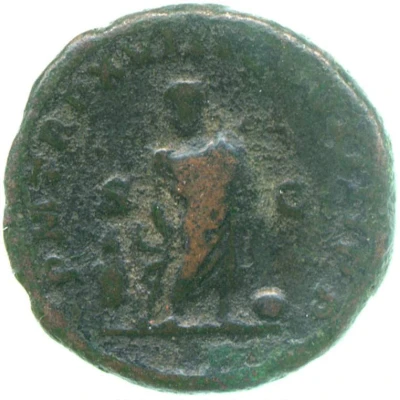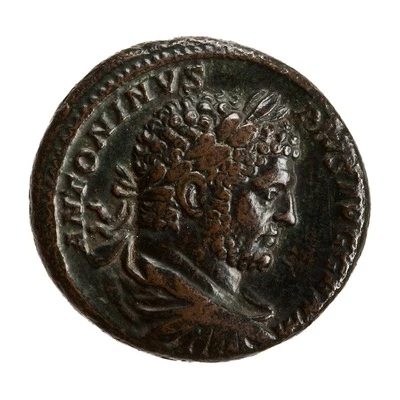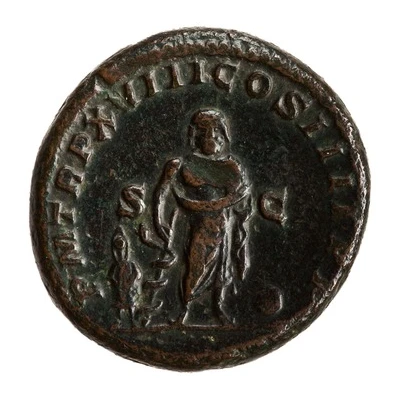


© The Fitzwilliam Museum, Cambridge
As - Caracalla P M TR P XVIII COS IIII P P S C; Jupiter and Victory
215 year| Bronze | 10.9 g | 25 mm |
| Issuer | Rome › Roman Empire (27 BC - 395 AD) |
|---|---|
| Emperor | Caracalla (Marcus Aurelius Antoninus Caracalla) (198-217) |
| Type | Standard circulation coin |
| Year | 215 |
| Value | As (1⁄32) |
| Currency | Antoninianus, Reform of Caracalla (AD 215 – 301) |
| Composition | Bronze |
| Weight | 10.9 g |
| Diameter | 25 mm |
| Shape | Round (irregular) |
| Technique | Hammered |
| Orientation | Variable alignment ↺ |
| Demonetized | Yes |
| Updated | 2024-10-05 |
| Numista | N#273959 |
|---|---|
| Rarity index | 100% |
Reverse
Jupiter, naked to waist, seated left, holding Victory in extended right hand and sceptre in left hand; at feet, left, eagle.
Script: Latin
Lettering: P M TR P XVIII COS IIII P P S C
Translation:
Pontifex Maximus, Tribunicia Potestate Octava Decima, Consul Quartum, Pater Patriae. Senatus Consultum.
High priest, holder of tribunician power for the 18th time, consul for the fourth time, father of the nation. Decree of the senate.
Comment
Mass varies: 9.29–13.81 g;Example of this type:
The Fitzwilliam Museum, Cambridge
Source:
Online Coins of the Roman Empire (OCRE)
Interesting fact
One interesting fact about this coin is that it features a rare combination of symbols and deities. The obverse side of the coin depicts the emperor Caracalla, while the reverse side features Jupiter and Victory, which is a unique combination for a Roman coin. This suggests that the coin may have been minted to commemorate a specific event or victory during Caracalla's reign. Additionally, the use of bronze as the material for the coin was a common practice during the Roman Empire, as it was a more affordable and durable option compared to other metals like gold or silver.

